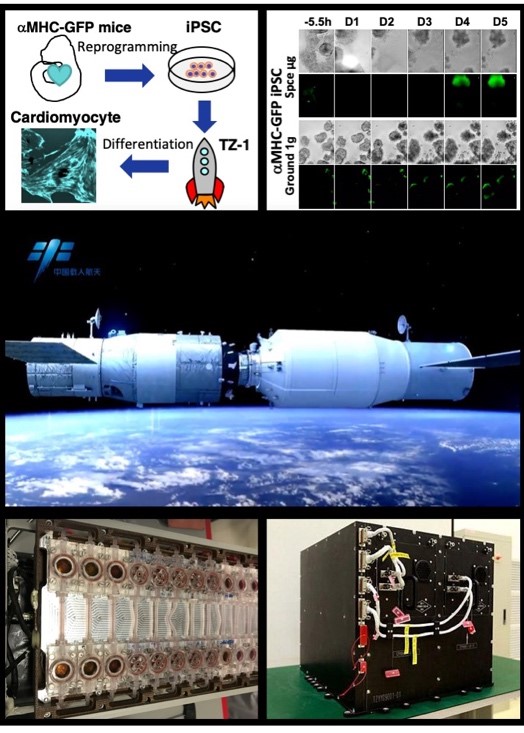In February 2019, a joint research team including Jie Na’s group from Tsinghua University and professor Changyong Wang and Jin Zhou’s group from the Institute of Military Cognition and Brain Sciences, Chinese Academy of Military Medical Sciences, published two reports in《Stem Cells and Development》and《Cell Proliferation》about how stem cells grow and turn into cardiomyocytes during spaceflight.

On April 20th 2017, Tianzhou-1(TZ-1) spacecraft was launched from the Wenchang base in Hainan Province, China. On April 22th 2017, TZ-1 docked with the Tiangong-2 space lab. TZ-1 carried bioreactors engineered by the Shanghai Institute of Technical Physics, Chinese Academy of Sciences. It carried out several human stem cell biology experiments, aiming to study how real microgravity influences stem cell behavior in mammals. Researchers first reprogrammed skin cells with fluorescence protein reporters to induced pluripotent stem cells (iPSCs), then put these cells in the bioreactor. The bioreactor can change medium automatically, take microscopic pictures of stem cells every day and transmit the picture to the station on earth, so we can watch the behavior of live stem cells. Stem cells were grown in the bioreactor for 14 days in space. In the differentiation experiment, iPSC strongly activated heart specific gene 4 days after launch and lasted for 10 days afterwards. In the cell growth test, real microgravity appeared to enhance the regeneration capacity of iPSCs. Our study provided rare information about iPSC cardiac differentiation in space. In the future, similar automated stem cell experiments may help to realize personalized cardiac tissue biomanufacture and drug test during space travel.
Drs Jie Na, Hong Li, Changyong Wang and Jin Zhou were corresponding authors of the study. Ph.D. students Fengzhi Zhang, Xi Chen and Peizhe Wang performed cardiomyocyte differentiation, transgenic mice generation and cell reprogramming experiments. This work was supported by the National Key Research and Development Program of China, the Natural Science Foundation of China and funding from Tsinghua-Peking Center for Life Sciences.
◎论文链接:
https://www.liebertpub.com/doi/abs/10.1089/scd.2018.0240
https://onlinelibrary.wiley.com/doi/full/10.1111/cpr.12574